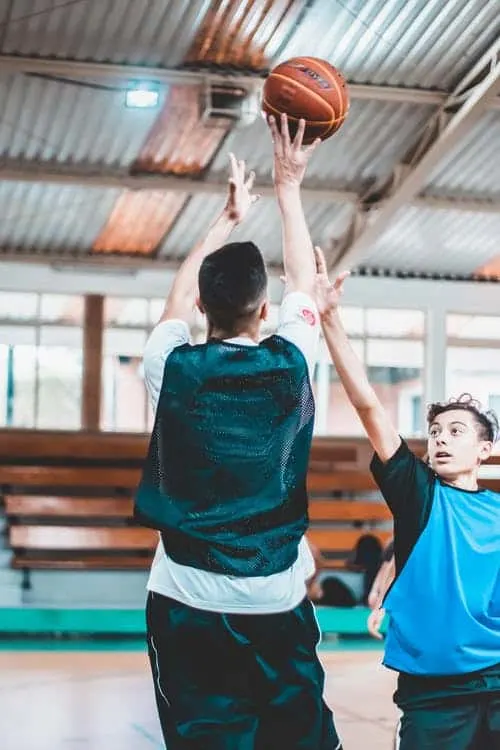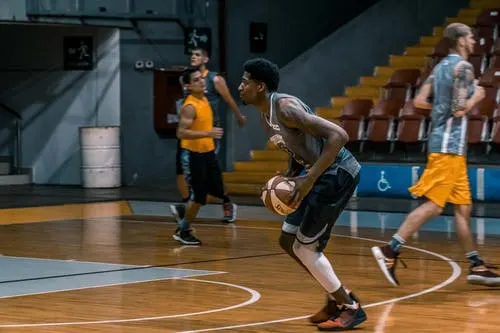Basketball has many rules, and in those rules are many variations and terms. The up and down rule is not actually the rule, it is just used to describe what had happened in the play that resulted in a turnover in possession.
What is an up and down in basketball? An up and down in basketball is a violation of the rules of the game basketball. In which a player jumps up with the basketball and instead of releasing the ball to pass or shoot, they land with it. The up and down is not an actual rule but just a term used. The correct term for this violation is a travel. Landing with one or two feet does not matter, it is still considered a violation.
Where it can be a little more difficult for a referee to make a correct call on an up and down is when an opposing player makes a play on the ball which could cause the player to lose possession mid-air while not being able to get the shot off, but land with the basketball.
If you are interested in checking out the best basketball equipment and accessories then you can find them by Clicking Here! The link will take you to Amazon.com

Why is the Up and Down Rule in place?
There are a number of ways players are called for an up and down violation, usually this a play that new players to the game of basketball make in which they are attempting a shot and do not want to be blocked by the defender. The player ends up landing with the basketball and this becomes a turnover and possession goes to the other team.
The rule is in place because just like your not allowed to take more than 2 steps in a game of basketball, your also not allowed to jump up and land with the ball. Think about it this way all I would need to do is jump a little bit off the ground and then go by you when you jumped off the ground to try and block my shot. This is why we have a pump fake.
Isn’t a Jump Stop Technically an Up and Down
Well, no. According to the rule book in the NBA and across every league it is perfectly legal.
RULE NO. 10: Violations and Penalties
- A progressing player who jumps off one foot on the first step may land with both feet simultaneously for the second step. In this situation, the player may not pivot with either foot and if one or both feet leave the floor the ball must be released before either returns to the floor.
One thing with basketball when I coach I always tell the players I am coaching who complain about phantom calls on the court is that it just has to look like a foul. If you are dribbling and you go up for a layup well you can come down with the basketball and land on two feet then go back up. Everyone in the building will know you wanted to layup the ball.

Faking the Up And Down
Some players have excellent pump fakes when it comes to playing basketball and getting the defense to jump. The best pump fake is when a player is able to mimic their shot and even their own teammates think they are going to shoot the basketball.
Some players will fake an up and down by rising all the way up on their tippy-toes. It gives the illusion the player is about to shoot the basketball. I have even seen players who rise all the way up on one foot and extending it again mimicking their shot with great success.
The pivot foot and travel violation
In basketball, once you have established your pivot foot, it is a travel when you pick up your pivot foot and don’t release the basketball, think jumping in the air for a layup or shot. When putting the basketball down to dribble the ball must hit the ground before the pivot foot leaves its position. One other note is when you go for a rebound and land with one foot first then the second following, the foot that hit the ground first is your pivot foot when you have the ball.
For example, a shot is taken and I go up to get the rebound and I come back down and land with a left then right landing with basketball in hand. My pivot foot is my left foot as it landed on the ground first. If I land with both pivot feet at the same time I am free to use either pivot foot.
